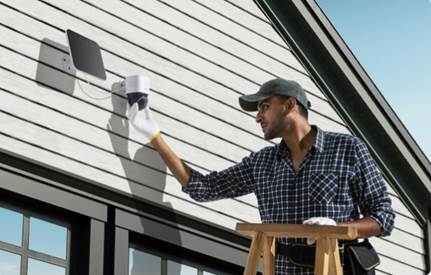Efficiency
starts with strategy—even for robot vacuums. A well-planned cleaning sequence
doesn’t just save time; it can double your device’s effectiveness while
protecting its motor and battery. Many users assume their robot vacuum will
figure everything out automatically, but without intentional programming, it
may waste energy on low-priority areas or miss spots entirely. Studies show
that optimizing cleaning routes can reduce runtime by 50% while improving
debris pickup. In this article, we’ll break down how to customize your robot vacuum cleaner’s
workflow for a spotless home with minimal effort.

Step 1: Map Your Home's Cleaning Priorities
Before
your robot vacuum starts its job, take time to analyze your living space.
High-traffic zones like entryways and kitchens collect more dirt than bedrooms
or formal dining areas. Identify problem spots—pet hair near sofas, crumbs
under the dining table, or dust along baseboards—and mark them as priority
zones in your vacuum’s app. If your device supports room-specific cleaning,
group areas by urgency (e.g., "Kitchen: Daily" vs. "Guest Room:
Weekly"). This prevents the vacuum from wasting cycles on already-clean
spaces. For open-floor homes, virtual barriers can block off less critical
sections until deeper cleans are needed.
Step 2: Configure Modes by Floor Type
Gentle Mode for Hard Floors (Tile/Wood)
Hard
floors require a different approach than carpets. Aggressive suction can
scatter lightweight debris like cereal or pet litter instead of capturing it.
Enable gentle or "hard floor" mode to reduce airflow intensity while
increasing brushroll speed, ensuring particles are swept into the dustbin
efficiently. If your vacuum has a mopping attachment, schedule wet passes after
dry vacuuming to avoid pushing damp dirt around. Pay extra attention to edges
where dust accumulates; some models offer "edge-cleaning" zigzag
patterns for baseboards. Avoid running the vacuum immediately after
spills—manually blot liquids first to prevent smearing or damaging internal
components.
Carpet Boost Mode Testing
Carpets
demand stronger suction to pull dirt from fibers, but not all carpets are
created equal. Test "carpet boost" settings on a small section
first—high-pile rugs may tangle brushes, while low-pile options work best with
moderate power. If your vacuum struggles to transition between surfaces, adjust
height settings manually or enable auto-detection features if available. For
homes with mixed flooring, prioritize vacuuming carpets last since they shed
particles onto hard floors during cleaning. Regularly check brushrolls for hair
wraps, which reduce efficiency and strain motors over time.
Step 3: Smart Timing Strategies
Pros/Cons of Daytime Cleaning
Daytime
cleaning works well for households with predictable schedules. The noise is
less disruptive, and sunlight helps the vacuum’s sensors navigate accurately.
However, if you work from home or have napping children, daytime runs may
interfere with calls or sleep. Program the vacuum to clean during natural
lulls—like mid-morning after school drop-offs or just before lunch. Avoid
running it during meal prep; sudden obstacles (like dropped utensils) can
confuse navigation systems.
Post-Meal Kitchen Spot Cleans
Kitchens
benefit from targeted post-meal cleanings. Schedule a 10-minute "spot
clean" after breakfast or dinner to capture crumbs before they spread. Use
zone-specific commands if available, focusing under the table and around
countertops. For sticky residues (like syrup or oil), manually pre-clean the
area to prevent clogging the vacuum’s filters. If your model supports voice
assistants, a quick command like "Clean the kitchen" saves time over
manual app adjustments.
Nighttime Quiet Mode Setup
Night
cleaning is ideal for light sleepers who prefer a quiet home during the day.
Enable "quiet mode" to minimize noise, though note suction power may
decrease. Ensure the vacuum’s path is clear of charging cables, toys, or
low-light obstacles it might miss. Closed doors or virtual walls can keep it
from disturbing sleeping areas. For safety, avoid running the vacuum overnight
in homes with pets prone to knocking it over or chewing cords.

Step 4: Advanced Feature Configuration
Multi-level
mapping is a game-changer for townhouses or split-level homes. Save separate
maps for each floor, labeling them clearly (e.g., "Basement: High-Pile
Carpet" or "Upstairs: Hardwood"). Smart vacuums can
automatically detect which floor they’re on and switch settings accordingly.
Enable maintenance alerts for filter replacements or brush cleaning—ignoring
these can lead to weak suction or motor damage. Some models even adjust suction
based on real-time dirt detection, saving battery for heavily soiled
spots.
Maintenance Programming
Recharge Frequency Optimization
Frequent
recharging extends battery life. Program the vacuum to return to its dock when
battery drops below 20%, rather than draining it completely. For large homes,
split cleaning into zones so the device recharges between sections. Avoid
placing the dock in cramped corners—clear space ensures proper alignment for
uninterrupted cycles.
Dustbin Emptying Schedule
A
full dustbin strains suction and spreads allergens. If your vacuum supports
auto-empty docks, set reminders to check the bag monthly. For standard bins,
empty them after every 2–3 runs (more often during shedding season). Wash
reusable filters every two weeks to maintain airflow.
Seasonal Adjustments (Humidity/Dust Seasons)
Summer
humidity can clump dust, requiring stronger suction, while winter brings salt
and sand near entryways. Create seasonal profiles—for example, increase
cleaning frequency during pollen season or enable "deep clean" modes
before holiday gatherings. Store the vacuum indoors to protect its battery from
extreme temperatures.
Conclusion
Programming
your robot vacuum isn’t just about convenience—it’s about precision. By mapping
priorities, adjusting modes per floor, and timing cleans strategically, you’ll
maximize efficiency without lifting a finger. For those seeking top-tier
performance, robot vacuum models like eufy’s deliver exceptional cleaning
power, tackling everything from pet hair to stubborn debris with smart feature
integration. Follow this checklist: test carpet modes, schedule post-meal spot
cleans, and enable maintenance alerts. Within days, you’ll notice a cleaner
home—and a device that works smarter, not harder.



